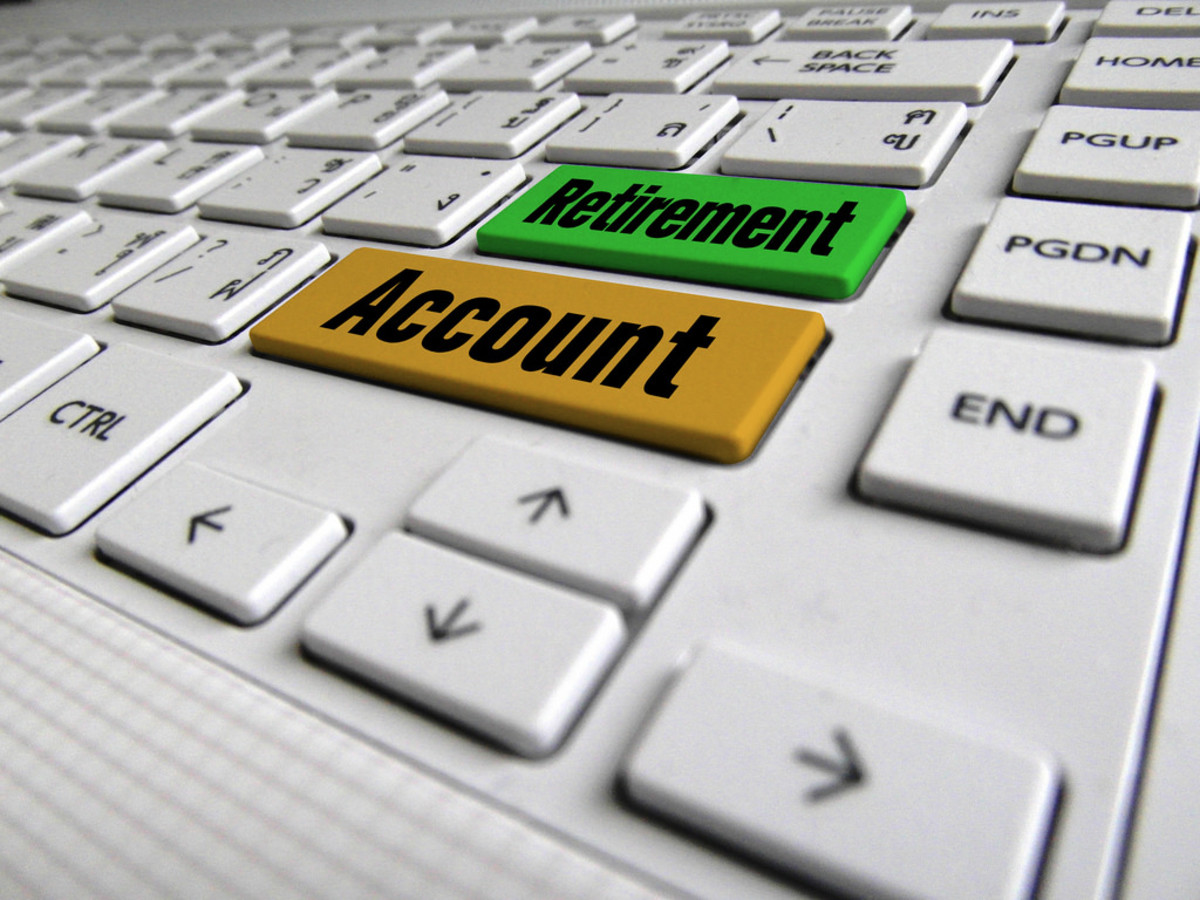10 Retirement Savings Tips for When You Start Your First Job.

The Power of Compounding
Amount invested now
| $1,000
|
|---|---|
Annual Rate of Return
| 7%
|
Value in 40 years
| $16,312
|
It is never too early to start saving for retirement.
“Compounding interest is the most powerful force in the universe.” -Albert Einstein
If you are starting you first job, I am sure the last thing on your mind is saving for retirement. But, it shouldn't be. I know you have been sacrificing and probably just getting by. You are finally going to make some real money. You want to enjoy it and buy a few things you need or have always wanted.
All well and good, but remember “pay yourself first”. Set aside some money for an emergency fund and start saving for retirement. Yes, I know it is 40 years away, but it is not too early to start. You are young, you can tolerate ups and downs in the market. More importantly, you have the benefit of time to allow your savings to compound. Let your money work for you. If you start late, you may never catch up.
Here are 10 tips for retirement saving as you first start out in your career.
Tax Savings and Net Investment Cost
Amount Saved (10% 0f Pay)
| $4,000
|
|---|---|
Income tax on $4,000
| $1,000
|
Net "Cost" of Contribution
| $3,000
|
This example assumes you are single, earning $40,000/year and therefore in the 25% tax bracket.
#1 Sign Up For Your Employer's Retirement Plan
Many employers automatically enroll their new employees in their retirement plan, often a 401(k) or 403(b). If your employer doesn't enroll you automatically, check with your human resources department and sign yourself up. The first step is to enroll. You can't play if you're not in the game.
For traditional 401(k) plans, your contributions to the plan are tax-deferred. It is made with pre-tax dollars and reduces your taxable income. Reducing your taxable income reduces the amount of income tax you'll pay each year you participate. Because of the tax savings, your contribution won't be as painful as you may think.
Also, the money in your account also grows tax-deferred. You won't pay income tax until you take the money out. (For a Roth 401(k), you pay the income tax on the money you contribute, but the money will grow tax-free and will NOT be taxed when you withdraw it).
#2 Contribute Something and Contribute Regularly
Have some money taken out of each paycheck. How much? Any amount you can, just start contributing. Get in the habit. After awhile, you won't even miss the money.
Your goal, eventually, if not initially, should be to save 10% of your income. If you start late or you hope to retire early, you may have to save 15% or more.
The maximum the IRS will allow you to contribute to a 401(k) in 2013 is $17,500 (if you are over age 50, you can contribute an additional $5,500). Yes, that is a lot of money. I know you need money to live on. Hang in there, keep saving, increase your savings a small amount each year or when you get a raise and you'll get there before you know it.
The Power of Compounding
Saver A
| Saver B
| |
|---|---|---|
Annual Contribution
| $2,000
| $2,000
|
Starting Age
| 19
| 26
|
Age at which contributions stop
| 25
| 65
|
Years of Savings
| 7
| 40
|
Total Amount Contributed
| $14,000
| $80,000
|
Amount available at Age 65
| $930,000
| $893,700
|
This example demonstrates the effect of starting late to save for retirement. Cashing out and starting all over would have the same effect.
The example assumes 8% annual return
The amount available at Age 65 assumes no further withdrawals until Age
#3 Contribute Enough to Get the Maximum Match (Free Money)
To encourage their employees to save for retirement, many employers ofter to partially match an employee's contribution. For example, your employer may match $0.50 for each $1 you contribute up to a maximum of 6% of your income. If your income is $30,000 per year and you contribute $1800 (6%), your employer will contribute $900 (3%). This is free money! You'll never get this kind of guaranteed return anywhere else.
Full disclosure, the money your employer contributes may not be all yours right away. The money will be in your retirement account for investing and growth, but if you leave your job early, some of this money may stay with your employer. Each plan will have a vesting schedule, usually 5 years. After the vesting period, all money previously contributed by your employer as well as any contributed in the future will be yours.
The box at the above right demonstrates that starting to save for retirement early, even if you stop saving but don't take the money out, you'll end up ahead of the person that starts saving late.
Rule of 72
Annual Rate of Return
| 10%
| 4%
|
|---|---|---|
Years to Double
| 7.2
| 18
|
The Rule of 72 is used to estimate the time it will take for an investment to double in value.
#4 Diversify Your Portfolio
As the saying goes, don't put all of your eggs in one basket, particularly if the basket is the default money market fund. Most retirement plans will provide information to help you decide where to put your money. You want to build a portfolio that will weather the market swings. A diversified portfolio with a mixture of equities, bonds, and cash may not always give you the largest gains, but it will hopefully spare you big losses in a down market. Investing only in a money market fund or your employer's stock usually are not the best choices for all of your money.
No plan is a plan. It is just a bad plan. Use your plan resources, do research on-line, and solicit the guidance of a trusted, experienced investor (a family member or friend). You may even want to seek the help of a financial advisor to develop your retirement portfolio.
The Rule of 72 (box at right) helps you estimate how long it will take for your investment to double in value for a given annual rate of return.
Fund Expense Comparison
Fund A
| Fund B
| |
|---|---|---|
Annual Rate of Return
| 7%
| 6.5%
|
Fund Expesnses
| 1.9%
| 0.4%
|
Annual Return after Expenses
| 5.1%
| 6.1%
|
#5 Watch Your Expenses
Don't let fund expenses exclusively drive your investment choices, but don't ignore them either. Over the long term (40 years until you retire), expenses can significantly cut into your total return.
A fund (Fund A) with a higher rate of return may actually have a lower net return after expenses (see box at right). Fund B has a lower annual rate of return, but also has far lower expenses. Fund B actually yields 1% more per year than Fund A. That 1% over 40 years can result in a much larger total retirement fund with Fund B than with Fund A.
Your choices will be limited to the choices in your employer's plan. But, the plan should provide you with the expenses charged by each fund. Don't just pick the lowest cost funds, but do take the expenses into consideration when choosing between one fund or another.
Tax and Penalties on Early Withdrawals
Amount Withdrawn
| $10,000
|
|---|---|
Federal Income Tax (25%)
| $2,500
|
Penalty (10%)
| $1,000
|
Net After Taxes and Penalty
| $6,500
|
This example assumes you are single, earning $40,000/year and therefore in the 25% tax bracket.
#6 Don't Take Money Out of Your Retirement Account Early
Yes, I know emergencies can come up or worse yet, you could have an extended period of unemployment. Your retirement funds maybe the only money available to help you make it through.
If you take your money out early, you lose future investment growth. In addition, you'll owe tax on the withdrawal and if you are under age 59 ½, you'll also owe a 10% penalty (see the box on the right). You could pay Uncle Sam 25% or more of the money you withdraw. This is not free money, this is your money! Don't give it up easily.
You should not pull money out of your retirement plan for:
- A child's college education (They can borrow for college, you cannot borrow for retirement).
- A wedding.
- To purchase Christmas gifts (a client in my tax office actually did this every year).
- A vacation.
#7 Be Careful If You Take a Loan from Your Retirement Fund
Plans will often let you borrow 50% of you account balance up to $25,000. You borrow your money and pay interest back to yourself. This sounds like a great idea. Maybe. This may not be a good idea if:
- Making the loan payments means you stop making your regular contributions. This is a particularly bad plan if you loose your employer's match.
- You lose your job, change jobs or your employer changes plan custodians. In these instances, you may have to pay all of the outstanding balance of your loan immediately. If you can't do that, the loan will be considered a distribution and you will have to pay income tax on the loan amount and quite possibly the 10% penalty (see example in box with Tip #6 above).
Try other sources for loans first, home equity loans, student loans, or even a personal loan from a bank, before you borrow from your 401(k) or take money out of your retirement plan early.
Loans are not an option with an IRA.
#8 If You Change Jobs, Rollover Your Account, DON'T Cash Out
Rarely does anyone retire from their first job. It is common to change jobs over the course of your career. When you leave your job the question becomes, 'What do I do with my 401(k)?'. Basically, you have 4 options:
- Leave your money in your former employer's plan. Some plans will allow this, some won't. If your former employer's plan isn't very good or doesn't have great investment options, leaving it could be a bad idea.
- Roll your money over into your new employer's plan. Again, some plans will allow this, some won't. This may allow you to have all of your retirement money in one place.
- Roll your money over to a Rollover IRA. If you can pay the income tax, a Rollover Roth IRA may be an even better option (there is no 10% penalty on a Roth conversion). Fidelity, Vanguard, T. Rowe Price and several other fund companies offer Rollover IRAs. They may provide far more options for your investments and often with lower expenses than your former or current employer's plans.
- The worst option, cash out your 401(k). Sometimes, if the amount is small, say under $1,000, your former employer may not even ask, they will just do it. As I said before, this is not free money, this is your money. Try not to let them do it. This option comes with a tax bill that will also include a penalty (see example Tip #6 above). In addition, you loose the future investment growth.
#9 Your Employer Doesn't Offer a Retirement Plan
If your employer doesn't offer a retirement plan, you can always open a traditional Individual Retirement Account (IRA) or a Roth IRA. For 2013 you can contribute up to $5,500 a year ($6,500 if you are over age 50). Your contribution to a traditional IRA maybe tax deductible. IRAs are available from most banks, brokers, or mutual fund companies.
If you want to be really aggressive saving for retirement, after you max out the contribution to your employer's plan, you can also contribute to an IRA or Roth IRA.
#10 I'm Self-employed, Now What are My Options?
There are plenty of Retirement Savings Options for Small Businesses and the Self-employed. While the details too numerous for this discussion, the above link to my Hub should get you pointed in the right direction.

Final Thoughts
The take home point is to start saving for retirement when you start your first job. Don't put it off. Take advantage of your youth and the power of compounding. If you start late, you may never catch up.
If you are wondering how much you should have saved at each stage of your career, check out CyberShelley's "How Much Should I Save for Retirement". It will give you guidelines and targets of where you should be.
If you follow CyberShelley's and mts 1098's advice, success could mean that you owe taxes on your social security benefit. In "What do you mean there could be a Tax on Social Security?" I will explain how this could happen.
With discipline and a little sacrifice, you will have a nice nest egg for your retirement.
Disclaimer:
Any federal tax, tax planning, business planning, or financial planning information provided above or linked to this article is not meant to be specific to any particular individual, business, or situation. Anyone who wishes to apply this information should first discuss it with their lawyer, financial or business planner, accountant and/or tax professional to determine the appropriateness of the information and how it specifically applies to their unique situation.
Write Your Own Articles
- Write for the HubPages Network - Sign Up Now
Sign up for the HubPages Network to discover, create and connect with topics you're passionate about.
© 2012 Mark Shulkosky








